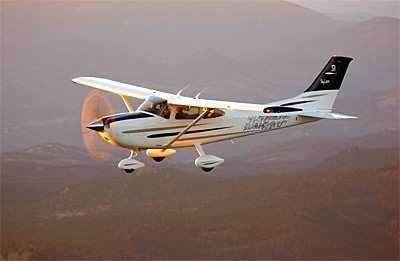Agency Offers Advice On Preventing Such Accidents
Controlled Flight Into Terrain (CFIT) is an unintentional collision with the ground, a mountain, a body of water or an obstacle, when the aircraft is under positive control. Most often, it happens during the approach or landing phase of flight.

According to the FAA, half of all CFIT accidents result in fatalities. What’s puzzling is that more than 75 percent of these accidents occur in daylight, and more than half are in visual conditions. More than 30 percent of the pilots had an instrument rating.
CFIT accidents include wire strikes, or continued visual flight rules flight into instrument meteorological conditions. That means the most common type of pilot error in CFIT accidents is the failure of the pilot to have situational awareness: knowing at all times what his or her position is, how that position relates to the altitude of the surface of the Earth below and immediately ahead, and the course he or she is flying.
Sometimes a contributing factor could be subtle navigation equipment malfunctions, which may mislead the crew into improperly guiding the aircraft. Fatigue can cause even highly experienced pilots to make significant errors.
Don’t forget unrealistic aircraft performance expectations. High-density altitude or tailwinds on approach can create havoc. To stay safe, make sure you are in compliance with all aspects of the clearances you accept and the procedures you fly. Fully research the environment you plan to operate in, especially in high altitudes and abbreviated runways.
The bottom line is that the causes of CFIT are common, and they underline the need for all pilots to remain alert and aware.
The FAA says several electronic warning systems are available, including GPS databases and terrain awareness warning systems. The first generation of those systems was known as ground proximity warning systems, which used a radar altimeter to help calculate terrain closure rates. That system has been updated and is now known as the enhanced ground proximity warning system, which, when combined with mandatory pilot simulator training, emphasizes proper responses to potentially dangerous events.
According to the agency, Safety Risk Management involves knowing what you’re getting into and understanding the capabilities and resources you need to ensure a flight is completed safely. SRM begins at preflight. Use a Flight Risk Assessment Tool and PAVE (Pilot, Aircraft EnVironment and External Pressures) to build a personalized risk assessment before every flight.
- Stay alert, aware, and avoid get-there-itis. Have an alternative plan ready, and be prepared to make a route change if needed.
- Keep your skills sharp by practicing with your flight instructor. Practice instrument procedures before you have to fly them for real.
- Finally, in the real environment, be sure to give yourself some breathing room, including a mile from airspace and 2,000 feet vertically from terrain. Watch the skies, by staying on top of the weather forecasts.
The FAA recommends that pilots fly regularly with a CFI who will challenge you to review what you know, explore new horizons, and to always do your best.
Be sure to document your achievement in the Wings Pilot Proficiency Program at www.FAASafety.gov. It’s a great way to stay on top of your game and keep your flight review current.
(Source: FAA. Image from file)
 Classic Aero-TV: Remembering Bob Hoover
Classic Aero-TV: Remembering Bob Hoover ANN FAQ: Follow Us On Instagram!
ANN FAQ: Follow Us On Instagram! ANN's Daily Aero-Linx (05.15.24)
ANN's Daily Aero-Linx (05.15.24) ANN's Daily Aero-Term (05.15.24):Altimeter Setting
ANN's Daily Aero-Term (05.15.24):Altimeter Setting Aero-News: Quote of the Day (05.16.24)
Aero-News: Quote of the Day (05.16.24)



